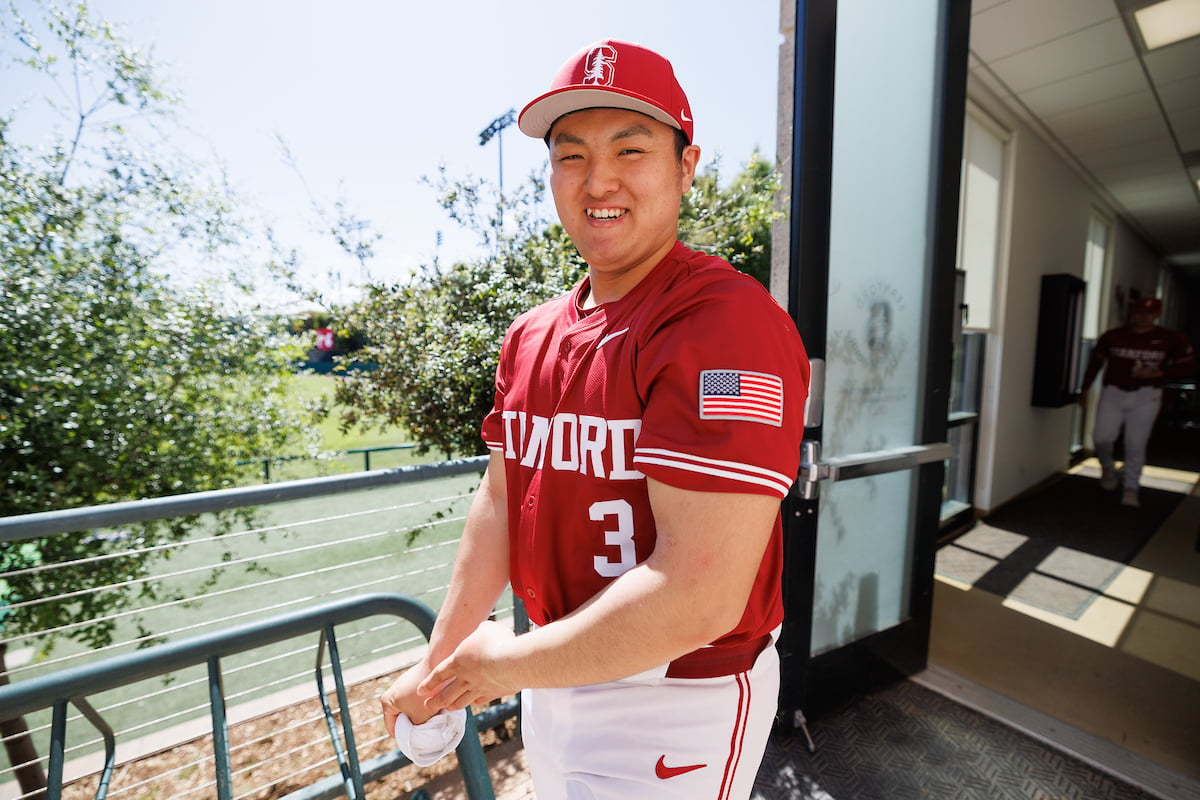On a February evening, assistant baseball coach and recruiting coordinator Thomas Eager was contacted by a potential recruit asking to chat via Zoom. Slightly confused and suspecting the worst, Eager and baseball head coach David Esquer hopped on the meeting.
“I went up and told coach Esquer, ‘Hey, I think this is the Zoom where he tells us he’s going somewhere else,’” Eager recalled.
After a months-long recruiting process, which included communicating with the player back and forth and thoughtfully hosting his official visit, Eager didn’t know what more he could’ve done. Every effort had been made to show this recruit the unique opportunities Stanford could offer.
The Zoom call began with the recruit asking questions, which would be unusual if he intended to commit elsewhere. The two coaches tried to read between the lines of each question asked. Esquer sent Eager a text asking, “Are we good?” Eager was unsure of the answer himself.
Then the player broke the news: “I’m coming to Stanford.”
The announcement stunned both coaches, as they almost fell backwards in their chairs and yelled with excitement. Sitting on the other end of the Zoom call was Japanese baseball prodigy Rintaro Sasaki ’28.
A new path forward
When asked to describe Sasaki’s game, one word immediately comes to mind: power.
“It’s legendary power,” Esquer said.
You can easily tell where Sasaki gets his power from. The 19-year-old slugger, 6-foot tall and weighing 250 pounds, easily launches baseballs into orbit.
Sasaki broke the Japanese national record when he tallied 140 home runs during his career at Hanamaki Higashi High School, which also produced Los Angeles Dodgers megastar Shohei Ohtani. He quickly became the top-rated high school player in Japan and the projected top pick in the the country’s Nippon Professional Baseball (NPB) league draft.
However, Sasaki decided not to register for the NPB draft, instead opting to come to the U.S. to play college baseball. It is rare for a prospect of his caliber to forego professional baseball in Japan, but for Sasaki, the reason was simple.
“My ultimate goal is to play Major League Baseball here,” Sasaki said through interpreter Junpei Tomonaga.
Sasaki is creating his own path. Playing college baseball would allow Sasaki to be eligible for the MLB draft as early as 2026, whereas the NPB could require him to stay in Japan for up to nine years before he could fulfill his big league dreams.
“I admire the fact that he wants to be an example to other Japanese students and blaze a trail into America and show that you can be successful on a college diamond,” Esquer said.
The recruiting process
Stanford’s baseball coaching staff first learned of Sasaki’s interest in the program when a member of his team reached out last summer. The Cardinal’s roster was full at the time, but an opening later appeared after a few transfers and de-commitments. Although the admissions process for an international athlete can be tricky, the staff took the risk and made the best effort to secure Sasaki.
“We wanted to circle back with people on his team and see if he still had interest,” Eager said. “Luckily we didn’t shoot ourselves in the foot the first time and he was able to come here.”
Sasaki, who was unfamiliar with the college recruiting process a year before, found himself on campus for his official visit in January. Accompanied by his family, he was given a full tour of the Farm, including classrooms, practice facilities and dining halls.
The coaches knew from their initial conversations that Sasaki was interested in schools that paired strong athletics with elite academics. But they also wanted to emphasize the supportive culture of the baseball team.
“We let his dad and his mom know that he’s going to be very well taken care of,” said Eager. “Our team is very open and he’s going to be treated like a brother.”
The coaching staff also had a few tricks up their sleeves to help Sasaki feel more welcome and comfortable.
Not only did they arrange for him to meet with some Stanford alumni in the major leagues, they also catered a taco truck after a practice and even arranged for sushi to be served in the athlete dining hall.
To Sasaki and his family, these efforts certainly made the right impression. While fielding offers from UCLA, UC Berkeley, Vanderbilt University and Duke University, Sasaki found that Stanford and its coaches that stood out.
“When I came to Stanford, I was impressed with the whole program, including facilities, equipment and everything available to the athletes,” Sasaki said. “I could tell, from the energy from the school’s side, how much they wanted me.”
But what ultimately sealed the deal was the relationship Sasaki and the coaching staff were able to form throughout the recruiting process.
“I liked [the coaching staff’s] honesty and sincerity, and that was a major reason why I chose Stanford,” Sasaki said.
After landing Sasaki, the coaching staff hopes to expand the recruiting base internationally.
“I’m hoping that with this success, that [Stanford] will be a destination spot for some of the better players in Japan,” Esquer said. “I’d love to bring more foreign baseball players to campus. I think it’s good for our diversity.”
